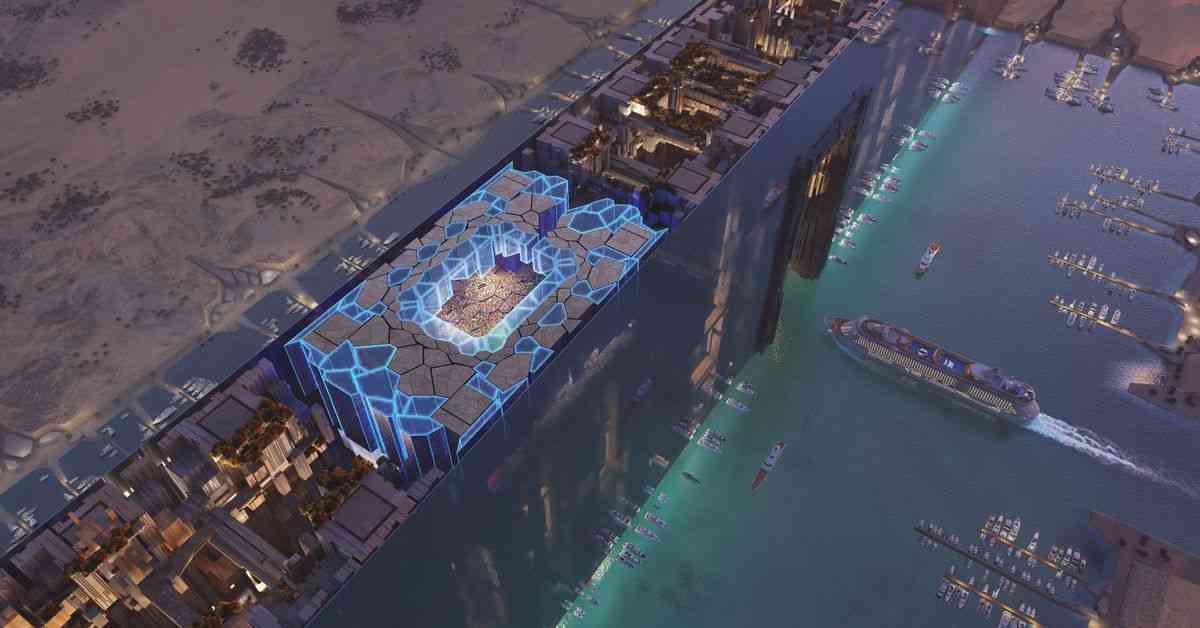Saudi Arabia has recently unveiled its ambitious plan to construct 11 soccer stadiums in its bid to host the 2034 FIFA World Cup. Among these stadiums is the Neom Stadium, which stands out as a futuristic marvel straight out of a video game. The stadium, located within the country’s smart city, sits at a towering height of over 350 meters and boasts a unique design featuring polygonal shapes that form a reflective roof above the spectators seated in a beehive-like structure. With a seating capacity of 46,000, the Neom Stadium is set to be powered entirely by renewable energy sources such as wind and solar power, showcasing Saudi Arabia’s commitment to sustainability. Construction is slated for completion by 2032.
The Neom Stadium’s striking aesthetics seem to align perfectly with the overall design of The Line, a linear city spanning 106 miles encased by reflective walls and equipped with vertical housing units, a high-speed rail system, and 100% renewable energy. However, Saudi Arabia has come under scrutiny for its aggressive tactics in clearing villages to make way for The Line, as well as concerns regarding the extensive resources required for its construction. Critics have also accused the country of engaging in “sportswashing,” a practice where governments use major sporting events like the World Cup to divert attention and improve their public image. Similar criticisms have been raised over Saudi Arabia’s plans to host the inaugural Olympic Esports Games.
In addition to the Neom Stadium, Saudi Arabia has proposed the construction of the Prince Mohammed bin Salman Stadium, a three-tiered structure situated on the edge of a cliff surrounded by colorful glass panels and LED screens. While these renderings offer a glimpse into the country’s ambitious vision for the future of sports infrastructure, the final outcome may vary significantly from the initial designs.
As Saudi Arabia continues to push boundaries with its avant-garde stadium projects, the global community remains divided on the implications of such grandiose developments. While some applaud the country’s innovative approach to hosting major sporting events, others raise valid concerns about the social, environmental, and ethical ramifications of these futuristic architectural endeavors. Only time will tell how these ambitious plans will unfold and whether they will leave a lasting legacy beyond the world of sports.

